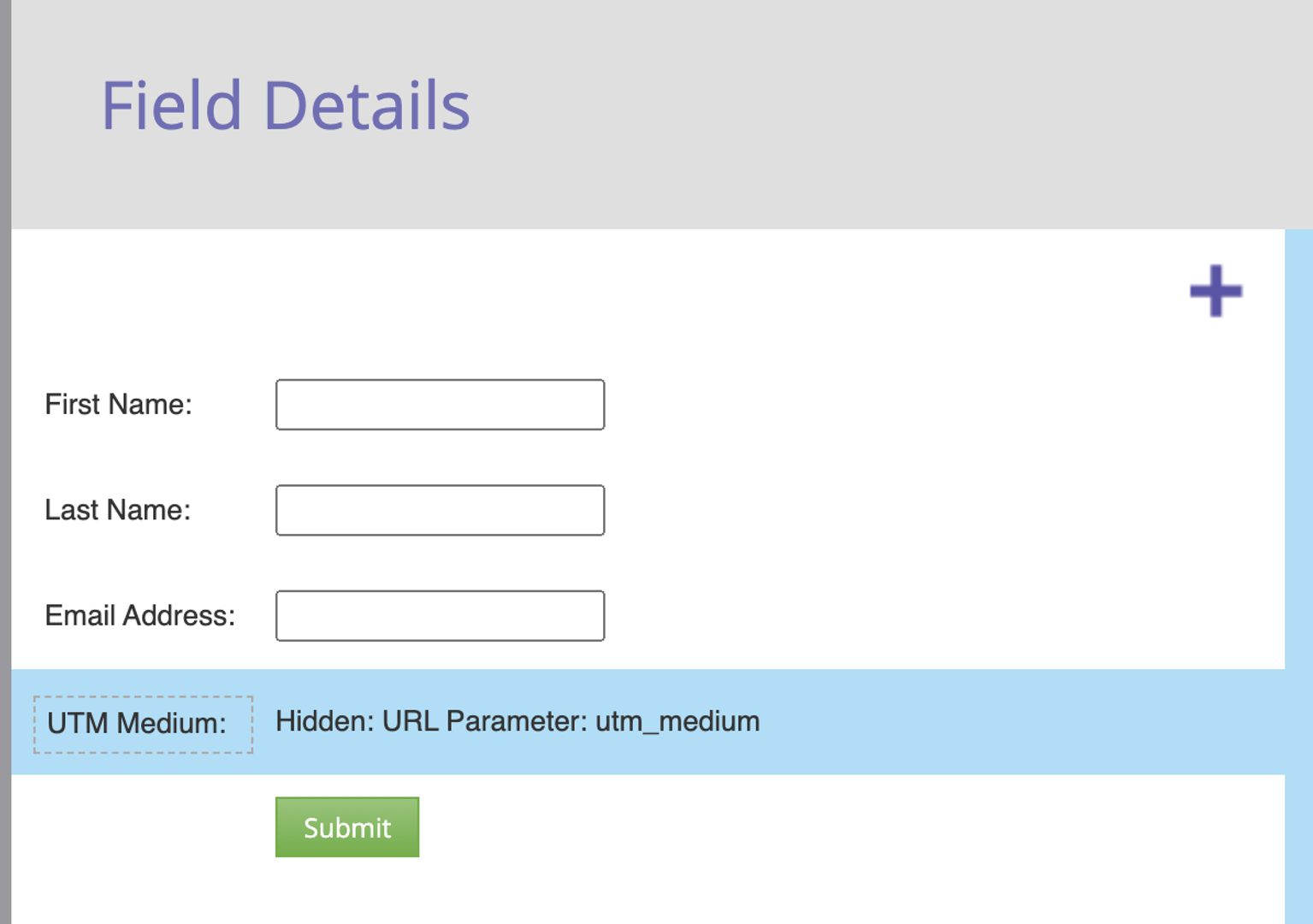Yes, you should add UTM to your Marketo email. It helps track performance and understand user behavior.
Understanding your email marketing performance is crucial. UTM parameters are small codes added to URLs. They track the source and medium of traffic. Adding them to your Marketo emails can offer valuable insights. You can see which emails drive traffic and conversions.
This data helps refine your marketing strategy. It also ensures your efforts are effective. Without UTM codes, tracking becomes difficult. Decisions might be based on guesswork. In this post, we will explore the benefits and steps to add UTM parameters. Let’s dive into why UTM codes are essential for your email campaigns.
Benefits Of Adding Utm To Marketo Emails
Adding UTM parameters to your Marketo emails offers many benefits. These parameters help you understand your email campaigns better. They provide insights that can help improve your marketing strategy.
Track Campaign Performance
UTM parameters allow precise tracking of your email campaigns. You can see which emails drive traffic to your website. This helps you identify the most effective campaigns. You can analyze the data to understand your audience’s preferences. This makes it easier to tailor your future campaigns.
Improve Roi Analysis
UTM parameters help you measure the return on investment (ROI) of your email campaigns. By tracking the traffic and conversions from specific emails, you get a clear picture of their effectiveness. This data helps you allocate your budget more efficiently. You can focus on strategies that yield the best results.

Credit: etumos.com
Understanding Utm Parameters
Understanding UTM parameters can help you track your marketing efforts. UTM stands for Urchin Tracking Module. These tags can show you where your traffic comes from. They are bits of text added to your URL. These bits can tell you a lot about your email campaigns. You can see which emails drive the most traffic. You can know which links people click the most.
Components Of Utm
Each UTM parameter has five main components. These components are source, medium, campaign, term, and content. The source shows where the traffic comes from. This could be Google, Facebook, or your email. The medium tells you the type of traffic. Examples include email, social, or CPC. The campaign name helps you identify the specific campaign. It could be a product launch or a holiday sale. The term is used for paid search. It shows the keywords that brought visitors to your site. The content helps you differentiate similar content. This is useful for A/B testing.
How Utm Tags Work
UTM tags work by adding extra information to your URLs. This information is then tracked by analytics tools. You add these tags to the end of your URLs. When someone clicks the link, the tags send data to your analytics tool. The tool then shows you detailed reports. These reports help you understand user behavior. You can see which emails perform best. You can adjust your strategies based on real data.
Setting Up Utm Tags In Marketo
UTM tags are essential for tracking the effectiveness of your email campaigns. By using UTM tags in Marketo, you can gain valuable insights into where your traffic is coming from and how users interact with your site after clicking a link in your email. This data can help you make informed decisions to improve your marketing strategy.
Step-by-step Guide
- Create UTM Parameters: Use a UTM builder tool to create unique UTM parameters for your email campaign. These parameters typically include source, medium, campaign, term, and content.
- Access Marketo: Log in to your Marketo account and navigate to the email section.
- Edit Email: Select the email you wish to add UTM tags to and click to edit it.
- Add UTM Tags: Insert the UTM parameters into the URLs within your email content. Ensure each link has the correct UTM tags appended.
- Save and Test: Save your changes and test the email to ensure the UTM tags are working correctly. Click on the links to verify they redirect to the intended page with UTM parameters intact.
Best Practices
- Consistency: Use a consistent naming convention for your UTM parameters. This makes it easier to analyze data across multiple campaigns.
- Clarity: Keep UTM parameters clear and descriptive. Avoid using ambiguous terms.
- Testing: Always test your links after adding UTM tags. Broken links can lead to a poor user experience and inaccurate data.
- Documentation: Maintain a document that records all your UTM tags and their purposes. This helps in tracking and analyzing your campaigns effectively.
- Automation: If possible, automate the process of adding UTM tags to reduce manual errors and save time.

Credit: knak.com
Common Mistakes To Avoid
Adding UTM parameters to your Marketo emails can enhance your tracking. But there are common mistakes that can hinder your efforts. Understanding these pitfalls can save you time and improve your campaign’s success.
Incorrect Tagging
Incorrect tagging is a common mistake. Ensure your UTM parameters are accurate. Double-check your URLs. Even a small typo can disrupt data tracking. Consistency is key. Use a standardized format. This helps you maintain clean data.
Overcomplicating Tags
Overcomplicating tags can also cause issues. Keep your tags simple and clear. Complex tags can confuse your tracking system. Use short, descriptive terms. This makes it easier to understand your data.
Analyzing Utm Data
UTM parameters are essential for tracking the success of your Marketo emails. They help you understand which campaigns drive traffic and conversions. By analyzing UTM data, you can make informed decisions to improve your marketing strategy.
Using Google Analytics
Google Analytics is a powerful tool for analyzing UTM data. Follow these steps to see how your Marketo emails perform:
- Log in to your Google Analytics account.
- Navigate to Acquisition in the left-hand menu.
- Click on Campaigns to see a list of your campaigns.
- Select the campaign you want to analyze.
Google Analytics provides various metrics to assess your campaign’s performance. You can see the number of sessions, users, and conversions generated by your emails.
Interpreting Metrics
Understanding the metrics is crucial for making informed decisions. Here are some key metrics to focus on:
- Sessions: The number of visits to your website from the email.
- Users: The number of unique visitors.
- Bounce Rate: The percentage of visitors who leave after viewing one page.
- Conversion Rate: The percentage of visitors who complete a desired action.
Use these metrics to gauge the effectiveness of your email campaigns. A low bounce rate indicates that your email content is engaging. A high conversion rate shows that your email prompts action.
Here’s a summary of the key metrics:
| Metric | Definition |
|---|---|
| Sessions | Visits to your website from the email |
| Users | Unique visitors |
| Bounce Rate | Percentage of visitors who leave after one page |
| Conversion Rate | Percentage of visitors who complete an action |
Regularly review these metrics to refine your campaigns. Adjust your strategy based on what works best. This ensures you get the most out of your Marketo email efforts.

Credit: knak.com
Case Studies
Understanding the impact of adding UTM parameters to your Marketo emails can be challenging. Real-world examples can help. Below, we delve into case studies that highlight the benefits and lessons learned from using UTM in email campaigns.
Successful Campaigns
Many companies have seen significant improvements by adding UTM parameters. These success stories demonstrate the value of tracking and analyzing email performance.
| Company | Campaign | Result |
|---|---|---|
| Company A | Summer Sale | Increased email click-through rate by 30% |
| Company B | New Product Launch | Boosted conversion rate by 20% |
| Company C | Monthly Newsletter | Improved engagement by 25% |
Company A saw a 30% increase in their email click-through rate. They used UTM parameters to track the performance of their summer sale campaign. This allowed them to see which emails drove the most traffic.
Company B experienced a 20% boost in their conversion rate. They tracked their new product launch emails with UTM parameters. This helped them identify the most effective messages.
Company C improved their engagement by 25%. They added UTM parameters to their monthly newsletters. This provided insights into which content was most popular with their audience.
Lessons Learned
These case studies offer valuable lessons. Adding UTM parameters to your Marketo emails can provide clear benefits. Here are key takeaways:
- Track Performance: UTM parameters help you track email performance.
- Identify Effective Content: You can see which emails drive traffic and conversions.
- Improve Future Campaigns: Use the data to refine and improve future campaigns.
Tracking email performance with UTM parameters is crucial. It allows you to see what works and what does not. This leads to better and more effective email campaigns.
In summary, adding UTM parameters to your Marketo emails can lead to significant improvements. You can track performance, identify effective content, and improve future campaigns.
Tools To Simplify Utm Management
Managing UTMs can be a challenging task, especially if you send many emails through Marketo. To streamline the process, several tools can help simplify UTM management. These tools automate tasks, ensure accuracy, and save time.
Automation Tools
Automation tools can help add UTMs to your Marketo emails. They reduce manual effort and minimize errors. For example, tools like Google Tag Manager and UTM.io can auto-generate UTM codes. These tools ensure consistent tracking across all your campaigns.
Using automation tools can also help with bulk UTM generation. This is useful if you manage large email lists. Automation tools can save time and improve efficiency. They also help maintain tracking accuracy.
Tracking Platforms
Tracking platforms provide detailed insights into your UTM performance. They help you understand how your emails are performing. Tools like Google Analytics and Mixpanel can track UTM parameters. These platforms offer detailed reports and analytics.
Tracking platforms can also integrate with Marketo. This integration provides a seamless way to monitor your campaigns. You can easily see which emails are driving traffic and conversions. This data helps refine your marketing strategies.
Frequently Asked Questions
What Are Utm Parameters In Marketo?
UTM parameters are tags added to URLs. They help track marketing campaign performance in Marketo.
Why Should I Add Utm To My Marketo Email?
Adding UTM helps track where your traffic comes from. It improves campaign tracking and analytics.
How Do Utm Parameters Benefit Email Campaigns?
They provide detailed insights into user behavior. You can see which emails drive the most engagement.
Can I Add Utm To Any Marketo Email?
Yes, you can add UTM parameters to any email. Just append them to your links.
What Should I Include In Utm Parameters?
Include source, medium, and campaign name. These help identify the traffic origin and campaign specifics.
Conclusion
Adding UTM parameters to your Marketo emails helps track campaign performance. It provides valuable insights into user behavior. This can improve your marketing strategies. UTM links make it easier to measure email impact. You can see what works and what doesn’t.
This data-driven approach enhances decision-making. It’s simple to set up and offers great benefits. Try adding UTMs to your next email. See the difference in your analytics. Effective tracking leads to better results.



Leave a Reply